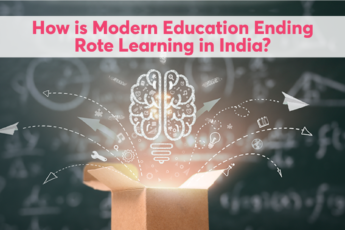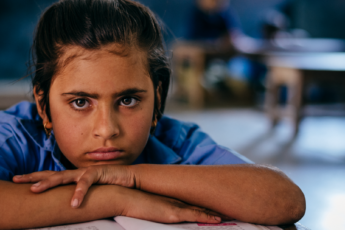ICT In Early Childhood Education Across India

“We need technology in every classroom and in every student and teacher’s hand, because it is the pen and paper of our time, and it is the lens through which we experience much of our world.” – David Warlick
As educator and author David Warlick reminds us, technology is permeating every sphere, and it has the potential to revolutionise learning as we know it. Bringing Information and Communication Technologies (or ICT) into the classroom can lead to greater developmental outcomes. Research shows structured exposure to thoughtfully constructed and well informed choices of technology supports young learners in many aspects of learning – language development and development of mathematical thinking. It also provides an opportunity for children with special needs to explore information on their own or with a little support from adults.
What Are The Benefits Of Using Technology In Education?
To keep up with the changing pace of education and to gain 21st century skills, technology needs to be interwoven into the early curriculum. As children live in a world dominated by technology and digitisation, we need to adapt our teaching styles to how they want to learn. Here are some key advantages to using ICT in education.
- Increased student engagement, as evidenced by research
- Technology can penetrate far-flung geographical regions, increasing access and promoting equitable learning
- Educators and caregivers find it easier to track and monitor children’s performance when they are using technology
- Artificial Intelligence and Machine Learning have taken ICT to a new level; adaptive, personalised instruction enhances technology offerings
- Taking certain manual tasks online means teachers spend less time on paperwork
- At its core and used effectively, ICT builds a bridge between students of different learning levels

The History Of ICT In Indian Education
June 1923
India’s first brush with ICT in education came with a radio broadcast by the Radio Club of Mumbai.
The 1930s
The BBC aired educational and cultural programs in India through broadcast radio.
1937
All India Radio broadcasted educational programs for school children.
1961
Educational Television (ETV), a pilot project by UNESCO and the Ford Foundations, was introduced in secondary schools in Delhi.
1984
For the first time in India, computers were used for education, in the Computer Literacy and Studies in School (CLASS) project.
2002
Gyan Vani, an educational radio station for all learners, including adults, came on air.
December 2004
The concept of ICT is introduced in schools.
2010
The Central Government revised this concept to include secondary school students too.
2020
The National Education Policy highlights the need for a dedicated unit to develop digital infrastructure and digital content, and increase India’s ICT-based educational initiatives.
*sources: Agrawal, 2005; Mohanty, 1984; NEP 2020
Leading early childhood experts have been studying the effect of the pandemic and subsequent disruption in learning. According to the UNESCO-UNICEF-World Bank survey on National Education responses to Covid-19 school closures, television-based remote learning policies have the potential to reach the highest proportion of students (62%), which amounts to almost 930 million students worldwide. Stakeholders across the Indian educational ecosystem have been tapping into this opportunity, leveraging technology like TV and radio to reach a larger subset of the student population.
A UNICEF report on India mentions, “School closures have impacted 247 million children enrolled in elementary and secondary education and 28 million children enrolled in pre-schools and Anganwadi centers. This is in addition to the more than 6 million girls and boys who were already out of school before the Covid-19 crisis.”
Recognising how the school closures could lead to a devastating learning loss, pandemic-driven ICT initiatives took learning from the classroom into homes around India.
ICT-Driven Initiatives Across India
BY GOVERNMENTS
Chhattisgarh: The state’s dense forest cover impedes its ability to digitally connect with all young learners. To overcome this, the state launched multiple initiatives during the lockdown. They started local classes called ‘Padhai Tuhar Para’, during which study material was shared via Bluetooth. They even crowdsourced content from teachers, NGOs, and other content development firms at zero cost.
Kerala: This government launched virtual classes through their educational television channel called Kerala Infrastructure and Technology for Education (KITE), which had launched in 2005. This government had already digitally linked classes – even primary classes – well before the pandemic hit, and transitioning online was relatively seamless.
Maharashtra: The Government of Maharashtra partnered with the Department of School Education and UNICEF (only technical support) to keep learning going. Their program – named The Learning from Home Package – comprises educational content from various technological platforms like TV, radio, and the internet, and is shared daily with parents and children to ensure even the most vulnerable receive educational support.
Madhya Pradesh: This state envisioned a new learning initiative called DigiLEP, integrating digital learning with classroom teaching in the post-Covid era, using one of the most widely used phone apps – WhatsApp.
*These initiatives make these states the perfect launching pad for the World Bank’s STARS project, which will provide USD 500 million to the governments of Himachal Pradesh, Kerala, Madhya Pradesh, Maharashtra, Odisha and Rajasthan, to support and strengthen the quality of school education.
BY ORGANISATIONS, NGOS, & INDIVIDUALS
SmarterED Platform by Lenovo: The technology company partnered with Vidyalaya, a non-profit, to enable volunteer teachers to educate young students from grades 5 to 12.
School-to-Home by Square Panda India: Square Panda’s ‘School-to-Home’ program recognises the importance of keeping the learning going and is extending education beyond school boundaries. Using blended learning and AI based technology, our system allows children to learn and improve their literacy skills even when they are physically distant from schools. Additionally, teachers can stay connected to students’ learning and build a partnership with parents too.
Individual Efforts By Educators And Anganwadi Workers: Adding to the national, international, and local efforts are the bravehearts fighting to deliver learning – our educators and Anganwadi workers. Meet some inspiring folks innovating during the learning crisis, here.

Challenges To Integrating ICT In Education
- Usage of technology is subject to its availability. This digital availability is intermittent at best across multiple regions in India, although measures have been taken to shore up these access gaps.
- Integrating technology into preschool and early education requires the presence of skilled educators and facilitators who can deal with issues as they crop up. Training teachers in ever-evolving technologies, regularly upgrading their skills, and keeping them informed of the latest developments and best practices is a Herculean task.
- Learning centres need the latest hardware and software for effective integration of digital technology. Setting up such facilities needs large investments on the part of the educational institutions and governments.
- Without guidance and effective integration, ICT has the potential to turn active engagement into passive use, affecting children’s cognitive, social, and emotional development.
3 Strategies To Incorporate ICT In Early Education
- Continuous Training & Assistance For Educators: The involvement of educators and caregivers is critical to the success of technology integration in early learning centres. Teachers need skilling in ICT to understand how technology can be used as a lesson delivery platform to present information to children. Additionally, regular training can overcome the initial resistance to technology in the classroom, and constant support serves to give educators more confidence as they use technology to drive learning outcomes.
- Public-Private Partnerships (PPP): Leveraging private organisation funds and technology in public schools can solve accessibility issues and raise infrastructure support across grassroots. The public sector will also benefit from the constant innovation and security protocols that are in place in such private entities.
- Create Blended Or Hybrid Learning Centres: This model combines new-age technology with traditional methods of learning to get best results out of both. For example, traditionally, a teacher would use flashcards, story books, and puppets to tell a story. New dimensions can be added using a digital drawing board, or even by an app that makes sounds to enhance storytelling time.
*Read our expert suggestions on how to set up blended classrooms easily.
Square Panda India & ICT
At Square Panda, we recognise the importance of equipping educators with technological know-how. Our educator empowerment programs include basic training about ICT, where we include topics about cyber safety and age-appropriate digital tools too. Our aim is to empower educators and help them use various tools and platforms effectively for teaching and learning, which in turn improves their professional development. Our programs are built to shape the future of our nation by transforming the way educators teach.
Square Panda India MD, Ashish Jhalani, remarks that “Many young children are first time technology users. Even before the pandemic increased edutech usage in schools, we saw how digital literacy improved over just a short time with our program. Children went from having no exposure to digital tools to being able to use tablets and mobile apps with ease. All this apart from the foundational literacy skills these children picked up.”
How do you use technology for teaching and learning in early childhood education? Comment below.




Leave a Comment